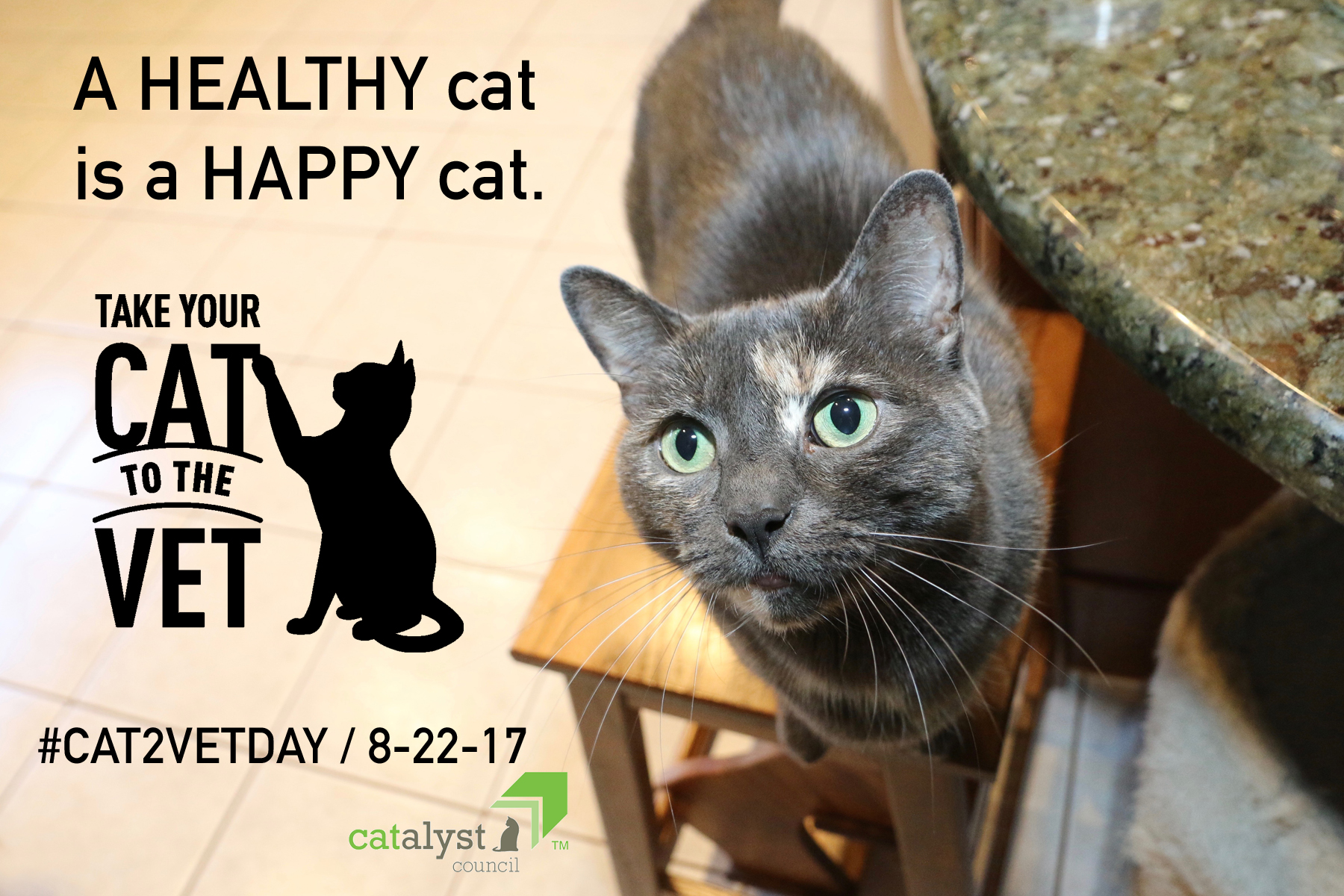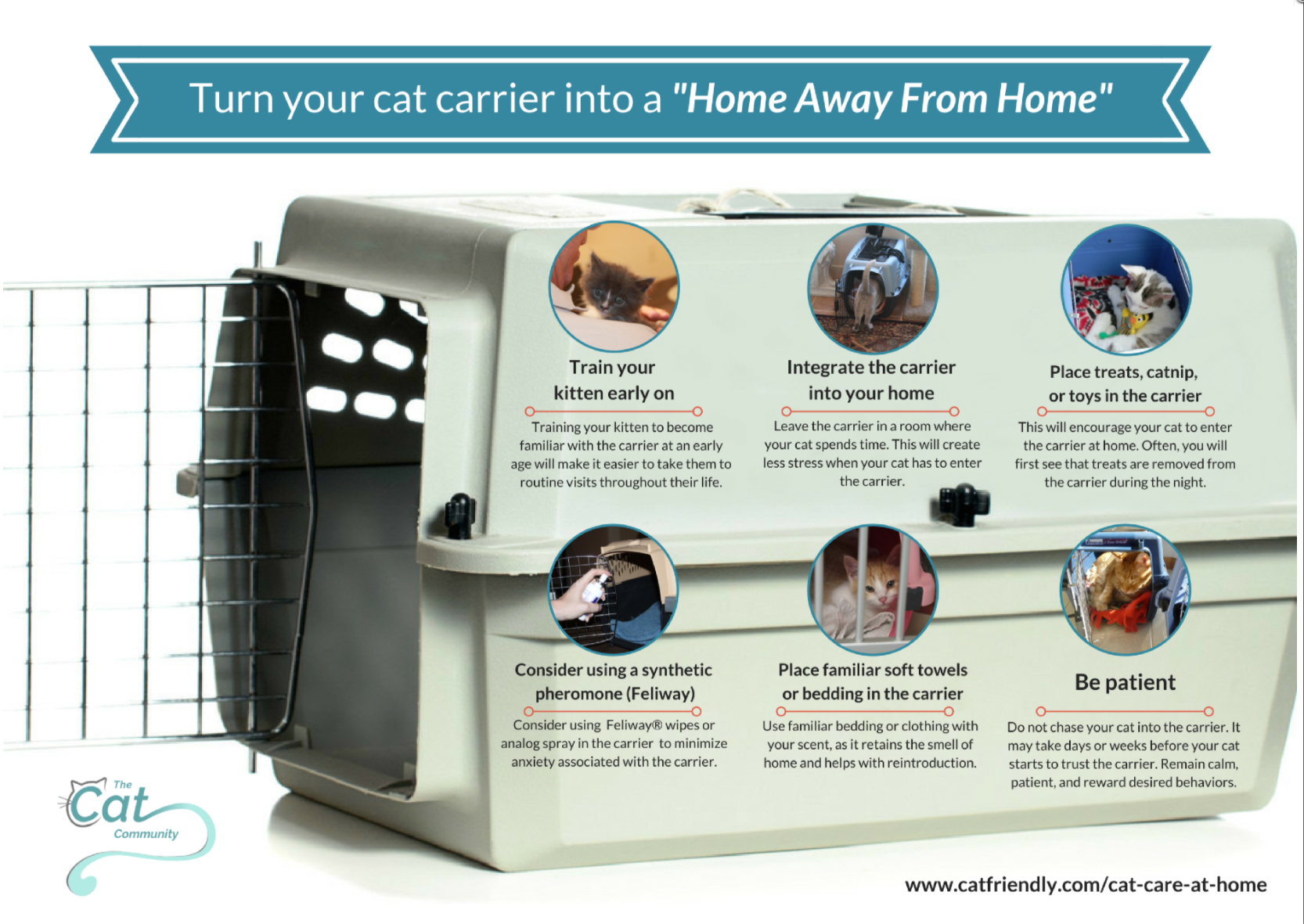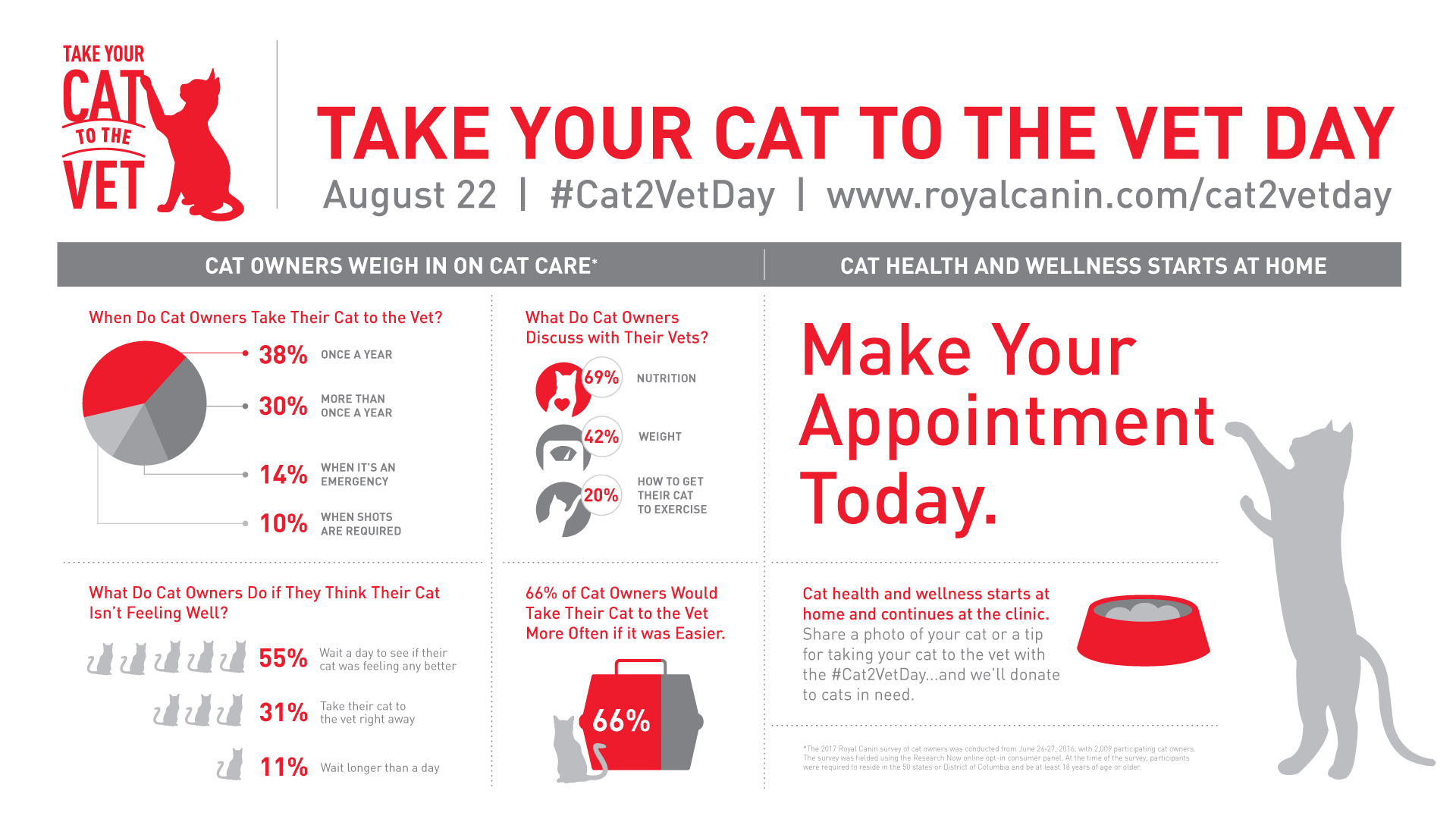by Susan Willett
It’s easy to argue that cats rule the internet and social media. The prevalence of cat memes and feline Instagram stars attest to that. But when it comes to veterinary visits, dogs win, paws down. According to a study by Bayer Animal Health(1), half of all American pet cats do not see a veterinarian regularly. And Banfield(2) reports that in their more than 900 veterinary hospitals, only one cat is seen by a veterinarian for every five dogs. This, despite many studies reporting that there are nearly eight million more pet cats than dogs in the U.S.

Cats are Good at Masking Their Illnesses
Even though they may love their pets, many cat owners don’t take their cats to the veterinarian for routine wellness visits. Cost can be one of the obstacles, and even more than cost is the belief that cats don’t need veterinary care as much as dogs.
“It’s not that cats are inherently healthier than dogs,” says Jane Brunt, DVM, Executive Director of the CATalyst Council, a coalition whose mission is to connect people and organizations to transform the health, welfare, and value of companion cats, and owner of Cat Hospital At Towson in Maryland. “It’s that they are stoic about their symptoms, making it nearly impossible for even the most observant pet owner to recognize signs of potential problems.”
Routine wellness exams can uncover illnesses before they become life threatening — and expensive.
Getting A Cat to the Vet Can Be a Challenge
The other reason that tops the list is getting the cat to the veterinary clinic in the first place. “Cats are fast learners,” says Brunt, “and if the only time a carrier is around is right before an unfamiliar experience, cats will learn to hide when they see or even just hear it.” And that’s just the beginning. “Once the owner drags their cat out from under the sofa,” she says, “there’s still the challenge of getting the cat into the carrier, followed by an uncomfortable ride in a car with a beloved pet who is scared and yowls the entire trip. It’s no wonder so many people avoid taking their cat to the veterinarian.”
The gap in preventative veterinary care that exists between cats and dogs needs to be addressed. But how?
The CATalyst Council Supports #Cat2VetDay
The CATalyst Council is calling attention to this issue by supporting National Take Your Cat to the Vet Day on August 22. The Council is working alongside Royal Canin and partnering with the American Association of Feline Practitioners, The International Cat Association and the Cat Fanciers’ Association in support of cat health and wellness. The goal is to increase awareness of the importance of routine veterinary cat care, sharing tips on how to make a trip to the clinic less stressful and encouraging cat owners to make appointments for their feline family members to be seen by a veterinarian.

Tips for Making a Trip to the Vet with Your Cat More Pleasant
Brunt has several tips to help make your cat’s trip to the veterinarian a more pleasant experience.
- Bring the carrier out at least a week before the appointment. Better yet, leave it out so the cat can get used to it, explore it, and maybe even curl up and take a nap in it.
- Make the carrier more attractive, Brunt says, by placing treats, catnip or favorite toys in the carrier.
- Place a recently worn article of your clothing — like a t-shirt or sweatshirt — in the carrier. “This can help make the carrier a safe place for your kitty — with something to snuggle in or hide under,” says Brunt. “Plus, in an unfamiliar place like a veterinary clinic, your scent can provide additional comfort to your cat.”
Your Veterinarian Can Help Your Cat Be Less Anxious
Brunt also suggests working with your veterinarian ahead of time to come up with a plan to reduce your cat’s stress. This may include feline facial pheromone spray or wipes, or prescription medications that will help most cats be less anxious. “Remember, cats are both predators and prey,” says Brunt. “They are the hunters and the hunted. It helps for both cat owners and veterinarians to see the world from a feline perspective, understanding what makes them anxious or afraid, and then taking steps to prevent, minimize and manage those fears.”
Take Your Cat to a Feline-Friendly Veterinarian
It may also help to bring your cat to a feline-only practice, says Brunt, or consider taking your cat to an AAFP-designated Cat Friendly Practice®, or a clinic that has been certified as Fear Free. Facilities and practitioners with these designations are focused on making visits to the vet as stress-free as possible.
To help cat lovers everywhere get involved in National Take Your Cat to the Vet Day, Royal Canin is asking cat owners to share a photo of their kitty or offer tips for a less stressful visit to the vet. For every post tagged with #Cat2VetDay in August, Royal Canin will donate $5 (up to a maximum total donation of $20,000) to Frankie’s Friends, a non-profit that helps with the cost of veterinary care for pets whose families can’t afford the full cost of treatment.

“Cats are part of our families. Their innate curiosity and playful antics make them wonderful companions,” says Brunt. But she adds, “Cats require more than love. They need our attention and care to keep them healthy and happy. And taking them in for routine wellness visits is one of the best ways to keep them purring for a long time.”
CWA members can help spread the word about #Cat2VetDay by writing, blogging, speaking and sharing information on social media. In addition to those mentioned in the article, the following are great places to find more information and resources to help get the word out, and to help remind people to take their cats to the vet.
AAFP Take Your Cat to the Vet Day web page
Royal Canin’s Take Your Cat to the Vet Day web page
Royal Canin #Cat2VetDay press release
1. Bayer Veterinary Care Usage Study III: Feline Findings http://www.bayerdvm.com/show.aspx/resources/feline-practitioners-resource-center/bayer-veterinary-care-usage-study
2. Banfield State of Pet Health Report, 2016: http://www.banfield.com/Banfield/media/PDF/Downloads/soph/Banfield-State-of-Pet-Health-Report-2016.pdf
That’s a good idea to put treats or a toy in the cat’s carrier. I would think that would make going in it a lot more appealing. I’ll have to give that a try next time I have to take my cat to the vet for a checkup.